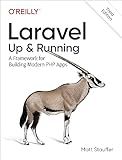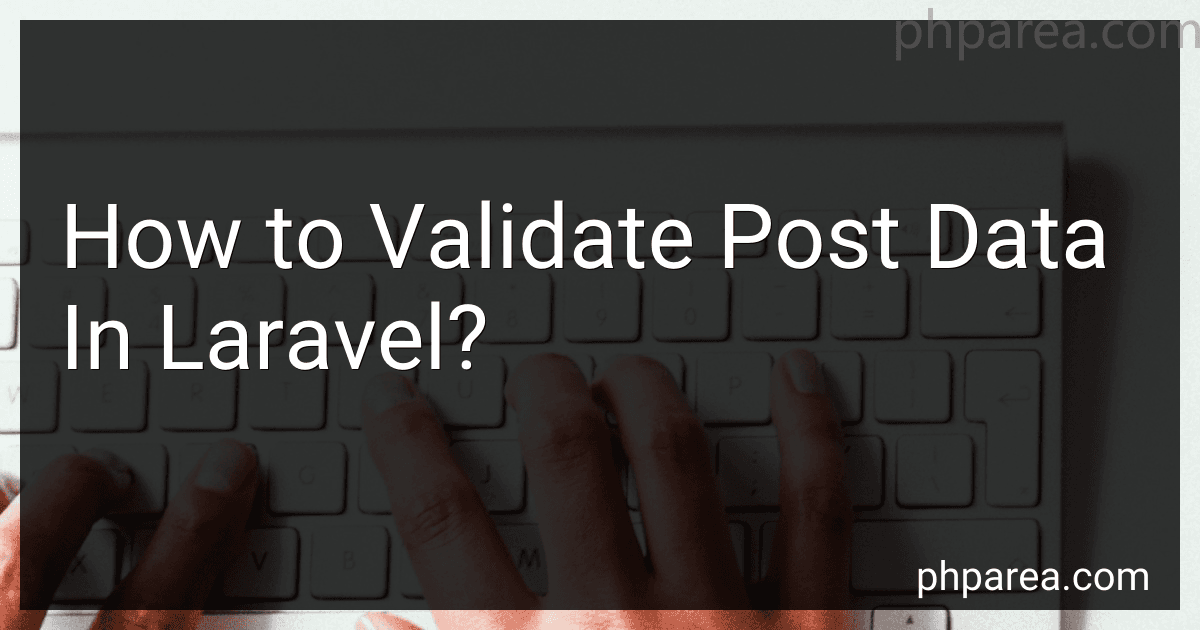Best Laravel Validation Tools to Buy in December 2025

Laravel: Up & Running


To validate post data in Laravel, you can follow the steps given below:
Firstly, define the validation rules for the incoming data in your Laravel Controller. You can do this by using the validate method provided by Laravel's ValidatesRequests trait. The validate method takes two parameters: the request instance and an array of validation rules.
Next, bind the incoming request data to the validated and sanitized data. You can use the validated method to retrieve the validated data from the request.
Then, if the validation fails, Laravel will automatically redirect the user back to the previous page with the flashed form data and the validation errors. You can display these errors in your view by using the errors variable.
If you want to perform additional actions when the validation passes, you can use the validated method to retrieve and process the validated data.
To display the error messages in your view, you can use the withErrors method provided by Laravel. This method will bind the validation errors to the view, making them accessible using the errors variable.
In case you want to perform custom validation logic, Laravel provides several other methods like sometimes, after, afterValidation, etc. These methods allow you to customize the validation process according to your requirements.
Lastly, you can also create custom validation rules in Laravel. You can achieve this by using the extend method provided by Laravel's Validator class. By extending the validation class, you can define your own custom validation rules and messages.
By following these steps, you can easily validate and process post data in Laravel. Laravel's built-in validation system provides powerful features to validate, sanitize, and handle validation errors effectively.
What is the syntax for validating a field as required in Laravel?
In Laravel, you can define validation rules for fields using the required rule. The syntax for validating a field as required in Laravel is as follows:
$request->validate([ 'field_name' => 'required', ]);
Here, field_name should be replaced with the actual name of the field you want to validate. The 'required' rule ensures that the field is not empty or null. If the field fails this validation rule, Laravel will automatically redirect back with an error message.
You can also provide a custom error message by passing an array as the second parameter to the validate() method:
$request->validate([ 'field_name' => 'required', ], [ 'field_name.required' => 'Custom error message for the required validation rule.', ]);
In this case, 'field_name.required' is the key of the custom error message, which you can modify as per your requirement.
How to validate input arrays in Laravel?
In Laravel, you can use the built-in validation class to validate input arrays. Here's how you can validate input arrays in Laravel:
- Create a validation rule: You can define your own validation rule by creating a new class that extends the Illuminate\Validation\Rule class. For example, let's create a rule called ValidArray in app/Rules/ValidArray.php:
php artisan make:rule ValidArray
- Open the ValidArray class and implement the passes method to define the validation logic. It should accept two parameters: $attribute and $value.
use Illuminate\Contracts\Validation\Rule;
class ValidArray implements Rule { public function passes($attribute, $value) { // Your validation logic here } }
- Use the newly created validation rule in your controller or wherever you want to validate the input array. For example, let's say you have an input array named input_array that has multiple elements with the key value:
use App\Rules\ValidArray; use Illuminate\Support\Facades\Validator;
$validator = Validator::make($request->all(), [ 'input_array.*.value' => ['required', new ValidArray], ]);
if ($validator->fails()) { // Handle validation failure }
- In the passes method of the ValidArray class, you can access each value of the input array using the $value parameter. You can then perform whatever validation logic you need on the array values. If the validation fails, return false; otherwise, return true.
That's it! Now, the input array will be validated using the ValidArray rule, and if it fails, you can handle the validation failure accordingly.
What is the validation rule for checking if a field matches a specific value in Laravel?
In Laravel, you can use the in validation rule to check if a field matches a specific value.
The syntax for using the in validation rule is as follows:
'field_name' => 'in:value1,value2,value3'
Here, field_name is the name of the field you want to validate, and value1, value2, value3 are the specific values that you want to compare with the field's value.
For example, if you have a field named status and you want to validate it to make sure it only accepts the values 'active' or 'inactive', you can use the following validation rule:
'status' => 'in:active,inactive'
This will ensure that the value of the status field matches either 'active' or 'inactive'. If the value doesn't match any of the provided values, the validation will fail.
